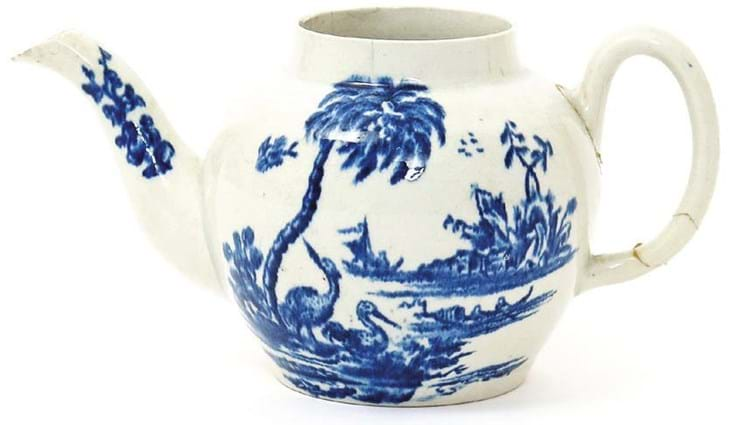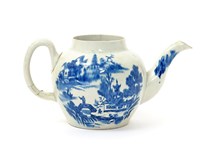The vessel, only the sixth piece known from the John Bartlam factory in Cain Hoy, South Carolina, will carry an estimate of £10,000-20,000 at Woolley & Wallis on February 20.
Bartlam’s kilns operating on the Wando river c.1765-70 are now recognised as the first to produce porcelain in America, preceding by about five years the better-known Bonnin and Morris factory in Philadelphia.
Low-fired phosphatic soft paste porcelain sherds were found at the Wando site in 2007, followed in 2010-11 by the discovery of a series of four blue and white teabowls and a saucer in English collections.
They had previously been sold or catalogued as Isleworth, the short-lived London factory that itself only arrived on the collecting map in the late 1990s.
The Chipstone Foundation in Milwaukee and the Philadelphia Museum of Art both acquired teabowls, while another offered for sale by Christie’s New York in 2013 sold at $120,000 (£76,000).
Midlands discovery
Clare Durham at W&W, who made the discovery, told ATG the vendor of the teapot, a private collector from south-west of England, had bought it quite recently in the Midlands for £15. Although lacking a cover and the handle broken and restuck, it carries the same ably-engraved pattern as the single recorded saucer.
One side pictures two cranes beneath a tall palm tree (seemingly a favourite Bartlam motif) while to the reverse is a version of the Man on the Bridge pattern.
The painted triple trellis border (different to sherds excavated at Isleworth) is common to all of the known pieces of Bartlam.
Quite why all examples of Cain Hoy porcelain have been found in Britain is a matter for conjecture, but perhaps Bartlam was shipping his porcelain to Britain for sale or had returned home with some of his stock.
Read more on John Bartlam and the early history of American porcelain















